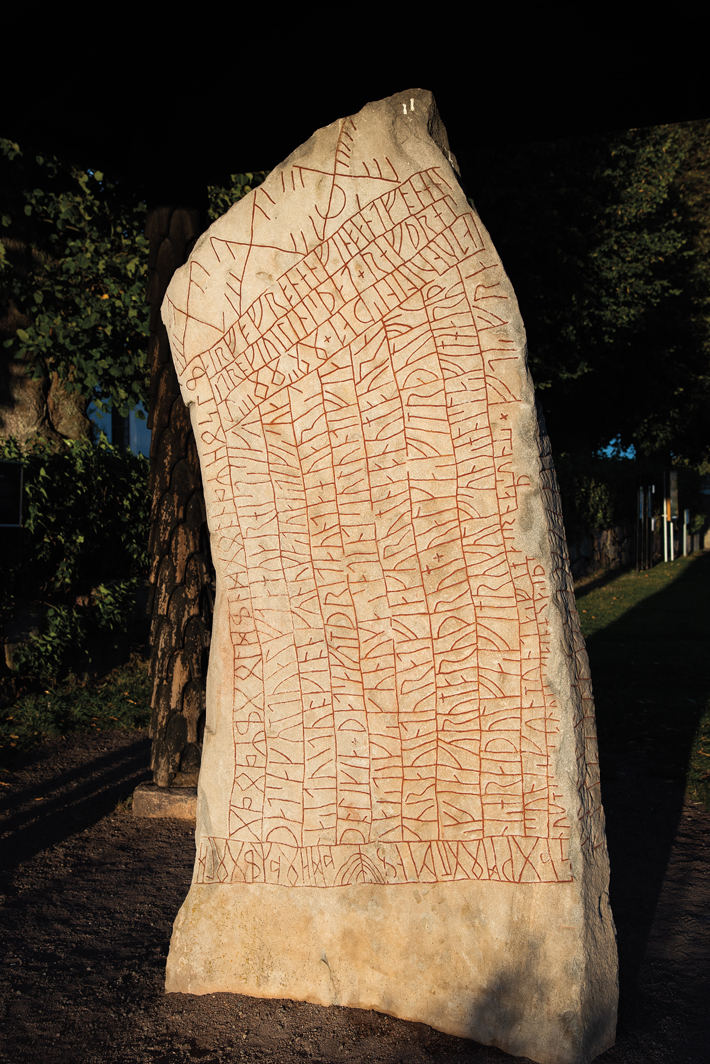Welcome to DU!
The truly grassroots left-of-center political community where regular people, not algorithms, drive the discussions and set the standards.
Join the community:
Create a free account
Support DU (and get rid of ads!):
Become a Star Member
Latest Breaking News
Editorials & Other Articles
General Discussion
The DU Lounge
All Forums
Issue Forums
Culture Forums
Alliance Forums
Region Forums
Support Forums
Help & Search
Anthropology
Related: About this forumThe Emperor of Stones
Saturday, 13 June 2020

(Helge Andersson) Rök runestone, Sweden
In the language of the Vikings, Old Norse, rök means “monolith,” and no other runestone stands out from its peers in more ways than Sweden’s Rök. The five-ton stone measures eight feet tall and its five sides are covered with the longest runic inscription in existence—some 760 runes divided into 28 lines. And, while the vast majority of runestones date to after the mid-tenth century A.D., the Rök was inscribed much earlier, around A.D. 800. “It’s the emperor of runestones,” says Henrik Williams, a runologist at Uppsala University. “Nothing can compare with it.”
Although scholars are united in recognizing the Rök’s singularity, with regard to its meaning all they can agree on is that it was set up by a local chieftain named Varinn as a memorial to his son Vamoth. The stone’s inscription has defied attempts at interpretation since the mid-nineteenth century, when it was transcribed after the Rök was removed from a structure into which it had been built centuries earlier. Decoding the inscription is made especially difficult as it features several styles of writing, including the earliest form of runes, called Elder Futhark, and two types of cipher. It’s not clear in what order the sections of the text are supposed to be read—or if it was even intended to be understood by mortals at all. “I don’t think this was ever meant to be read by humans,” says Bo Gräslund, an archaeologist at Uppsala University. “It was only meant for the gods.”
Now, a team composed of Williams, Gräslund, University of Gothenburg linguist Per Holmberg, and Stockholm University historian of religion Olof Sundqvist has developed a new interpretation of the inscription that ties it to themes in Norse mythology and to a devastating sixth-century climate crisis. The very beginning of the inscription—scholars generally agree it is the beginning—describes Vamoth as “death-doomed.” While most runestones memorialize the dead, says Williams, this phrase is unique to the Rök and suggests that the young man was fated to die for a particular reason.
Based on a number of allusions strewn throughout the inscription, the researchers believe that Vamoth perished so he could join the army of the chief Norse god, Odin, in Ragnarok, the apocalyptic battle pitting the Viking gods against their enemies, the giants. In one section, the researchers have detected a reference to one of the chief giants, the monstrous wolf Fenrir, swallowing the sun, the act that sets Ragnarok in motion. Another section describes Fenrir facing off against 20 kings—members of Odin’s army—on the Grove of Sparks, a name for the Ragnarok battlefield. And, near the end of the inscription, the team has gleaned a reference to Odin’s son Vitharr, who vanquishes Fenrir after the creature kills his father. Only then can the sun’s daughter take her mother’s place in the sky.
http://viking-archaeology-blog.blogspot.com/2020/06/the-emperor-of-stones.html
The link above leads to the following link:
https://www.archaeology.org/issues/388-2007/digs/8773-digs-sweden-runestone
1 replies
 = new reply since forum marked as read
Highlight:
NoneDon't highlight anything
5 newestHighlight 5 most recent replies
= new reply since forum marked as read
Highlight:
NoneDon't highlight anything
5 newestHighlight 5 most recent replies
The Emperor of Stones (Original Post)
Judi Lynn
Jun 2020
OP
Nitram
(26,582 posts)1. Fascinating mystery.